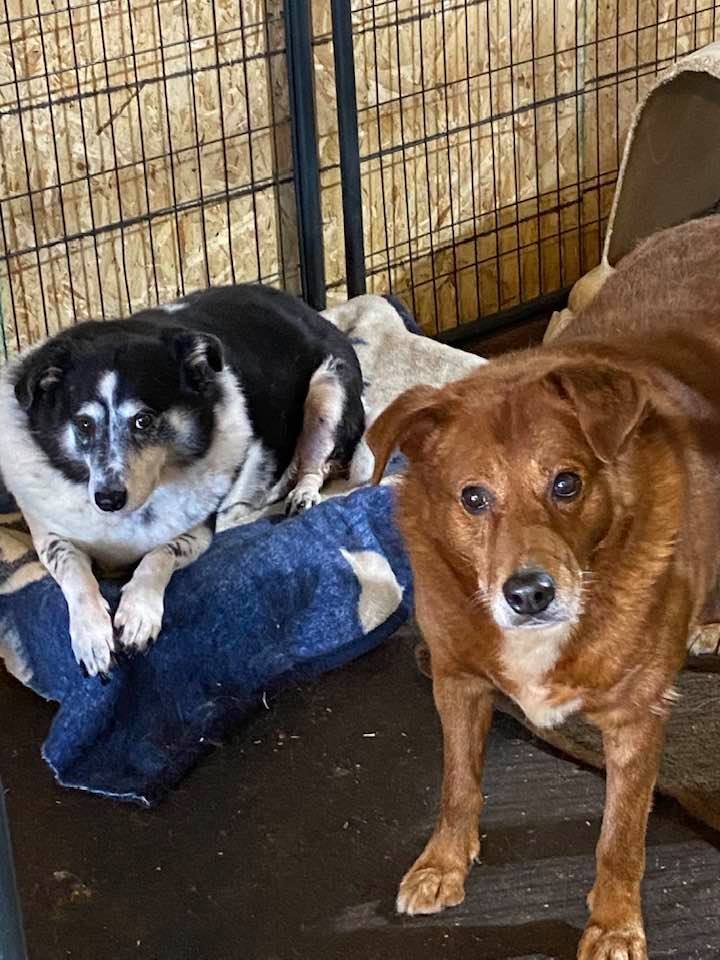
Feral Dog Rehabilitation Program
Here at The Devoted Barn we have a very specific step by step program for rehabilitating a feral dog into a domesticated dog. Although every feral dog is different we have found the most success by sticking to the following program.
Step One - Decompression
When Zara first came to The Devoted Barn she remained completely still with her face in the corner for almost two weeks. She only moved and ate at night when no humans were around.
When a feral dog first comes into our program they are on sensory overload. There are so many new, terrifying things happening to them that they completely shut down. They play a game we like to call "invisible dog." When playing "invisible dog" the feral dog will flatten themselves to the ground, hide their face in a corner and remain perfectly still in hopes that we humans can't see them.
During this step we ask absolutely nothing from the feral dog. We completely ignore them as we go about our daily chores and interact with the other dogs. This helps the feral dog to understand that we are not going to hurt them or make them uncomfortable every time that we enter the room.
Step Two - Integrating Into "The Pack"
This extra large crate is left open overnight allowing some of the dogs to interact with each other and begin to form a bond. Zara now regularly snuggles up with her buddies in the big kennel.
We always have multiple dogs in The Devoted Barn's feral dog program. Although the dogs are in varying stages of rehabilitation because of their nature they all bond together and form a pack. We encourage them to do this because it brings a form of security into their new lives at the barn. A pack is something familiar from their previous life and it helps to make them feel safe. Twice a day we put all the other animals away and the entire pack is let out into the open area of the barn for group play. This is by far their favorite time of day! Group play helps form the dynamic of the pack and allows them to dispel some energy.
Step Three - Only Good Things Come From Humans
Humans aren't so scary when they have cans of yummy wet food or Chicken!
Once a feral dog has become more comfortable with the barn environment and routine we begin to push them to become more comfortable with humans. What is the best way to do this? Food of course! Twice a day during group play we hand feed canned food as a special treat. We encourage as many people to participate in this as possible. The feral dog has to be brave enough to approach us but once they do they get a yummy treat. Our goal in doing this is to begin to earn these dog's trust by showing them that only good things come from humans. In keeping with that goal we never use any sort of negative reinforcement training techniques on these dogs. This is the foundation upon which The Devoted Barn's feral rehabilitation was built upon; ONLY good things come from humans!
Step Four - Pushing the Boundaries
Bobby takes a huge step forward by walking on a leash to the lake! Feral dogs take a very long time to become comfortable with the idea of a leash but Bobby did great!
While we continue to hand feed and provide positive reinforcement we begin to introduce the feral dogs to things that they have not been exposed to before. One of our biggest challenges is getting them comfortable with leashes. Leashes inherently make the feral dogs uncomfortable because there is no way to "escape" the human once they are wearing a leash. So we introduce things like leashes very slowly and with lots of treats and positive reinforcement.
Step Five - Feral Foster Home
Dazzle, A survivor of the horrors of the Thailand Meat Trade, enjoys pets from volunteer Shelley while hanging out at her Foster home with Sandy.
Once we feel that we have done everything that we can do for a feral dog at the barn we move them into a special foster home. Before moving into a feral foster home we require that the feral dog is able to walk on a leash and has formed a bond with the person they will be staying with. This helps ensure their safety. The feral foster home exposes them to even more things that domestic dogs see every day. Our initial goals in a foster home are not necessarily obedience and house breaking like most domestic dogs. We are simply giving them a chance to get comfortable in a totally new environment. Those other things can come later.
Step Six - Ready For Adoption!
Sweet Dazzle relaxing in the home of her new adopter Shelley. Dazzle has come a long way from the shutdown dog that arrived from Thailand years ago. We let the dogs in our dog program progress at their own pace. We give them the time, the tools and the love it takes to progress to this final step.
Our feral dogs spend a long time in a foster home before they are made available for adoption. It can take up to a year or more for one of our feral dogs to make it from a foster home to a forever home. Our adoption process is also more rigorous. Just like we do with the fosters, we require that our potential feral adopters spend time with the feral dog and develop a bond prior to adoption. The feral dog rehabilitation program here at The Devoted Barn requires a lot of time and effort but the end result is simply wonderful!





